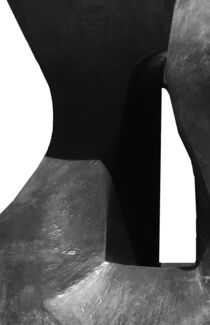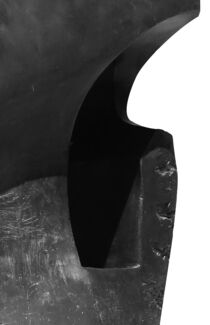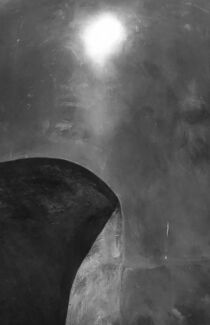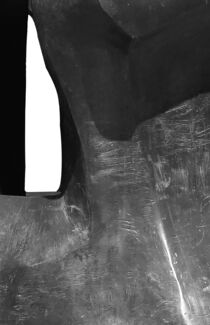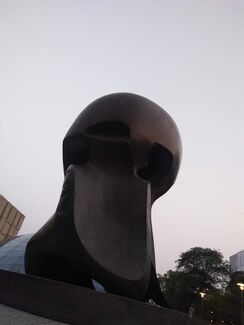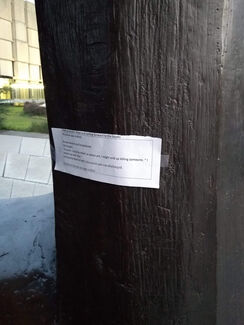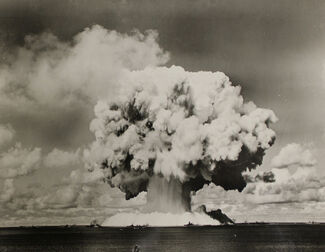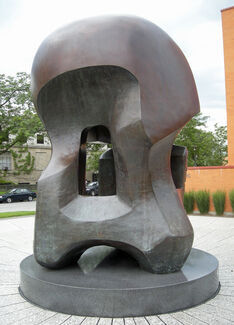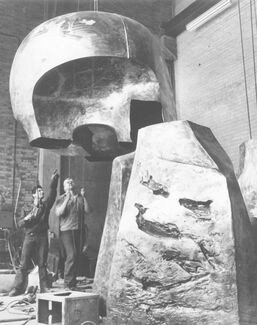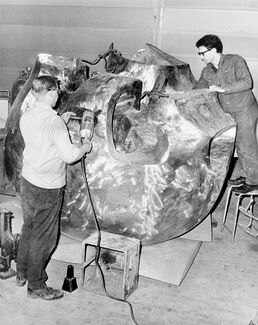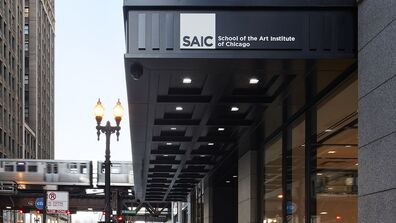
Past Shadow, Future Light by Hugo Juarez
The complex relationship of art to memorialization is as alive—and fraught—today as at any time in history. In this photographic study, Hugo Juarez reconsiders both the form and meaning of Henry Moore’s work commemorating the 25th anniversary of the first self-sustaining controlled nuclear reaction and installed in 1967 at the Chicago site of Enrico Fermi’s experiment.
While Moore’s art was part of the nuclear conversation, the beginning of the atomic age, Juarez’s honors his legacy at a time of renewed call for nuclear non-proliferation. Contemplating what once was and transforming it to something new, he further abstracts the work into a suite of images at once elegant and melancholy. Curves of the sculpture are accentuated; the play of shadows in the negative spaces highlight its internal forms. Here the age-long tradition of marshalling the beauty of art in the spirit of activism, Juarez honors the lives affected by nuclear arms and seeks to reintroduce the nuclear conversation into public consciousness.
Process
The compositions for Past Shadow, Future Light emerged organically out of Juarez’ documentary photographs of the Start a Reaction project, including photos of Nuclear Energy, Eiko Otake’s on-site development process, and the plaza itself. Every angle was explored, with particular attention paid to the at times subtle, at times overt narratives of Moore and Otake. With a keen eye for the interplay between light and shadow on the reflective bronze of Moore’s sculpture, the undulation of negative and positive space, the tension between abstraction and legibility, these early snapshots capture an artist searching for a vantage that is at once daunting and intimate.
Meta-abstraction
Combining transhistorical site-specificity with a type of international visual modernism very much rooted in a particular period, Henry Moore’s Nuclear Energy was an abstract representation of the dawn of the nuclear age that operated, and indeed still operates, at the nexus of many different places and times. These photographic works by Hugo Juarez represent dual layers of abstraction — abstractions of an abstraction — that further complicate the sited-ness of both Chicago Pile-1 and Moore’s sculpture.
Although the visual similarities between an atomic mushroom cloud and Nuclear Energy are striking, Moore insisted that the work was not representational in the traditional sense, but rather was meant to evoke a host of images and emotions, an affective toolkit including concepts of protection, potentiality, and the womb. Past Shadow, Future Light plays on these same affective strategies, bringing us closer to Moore’s sculpture, both literally and figuratively, as well as to the site, to its contested history, and to the specter of the nuclear age that was let loose by Enrico Fermi in 1945.
Structure
Much like the physical construction of Nuclear Energy, pieced together from precast geometric solids, Juarez’ suite of images represent modular components that become more than the sum of their parts. This emergent quality is not immutable, however — because while the structural order of Moore’s piece is fixed in the process of its installation, Past Shadow, Future Light allows for the arranging and rearranging of its constituent parts, becoming different topographies, different shadows and different light, with every shuffling of the cards.
